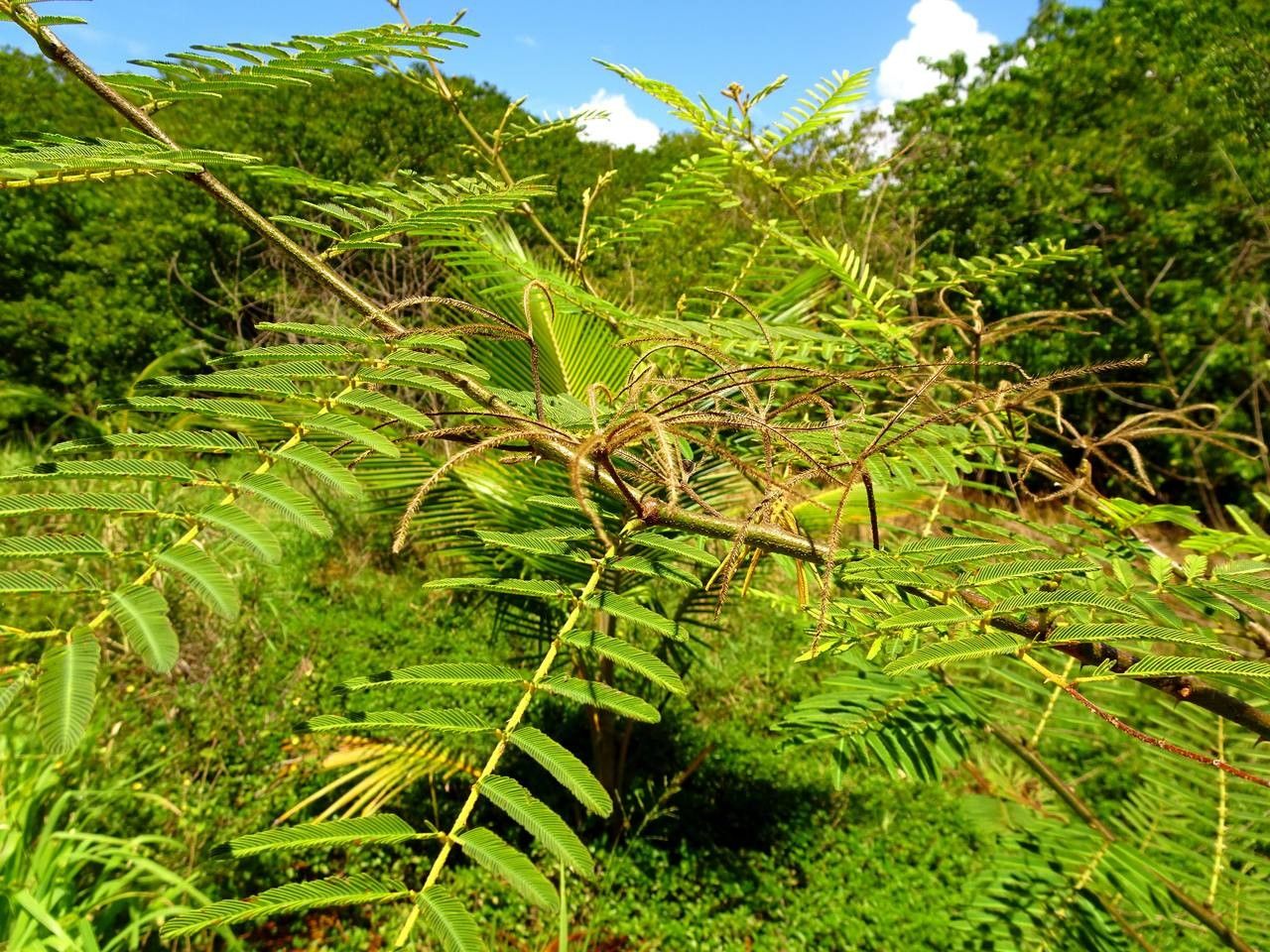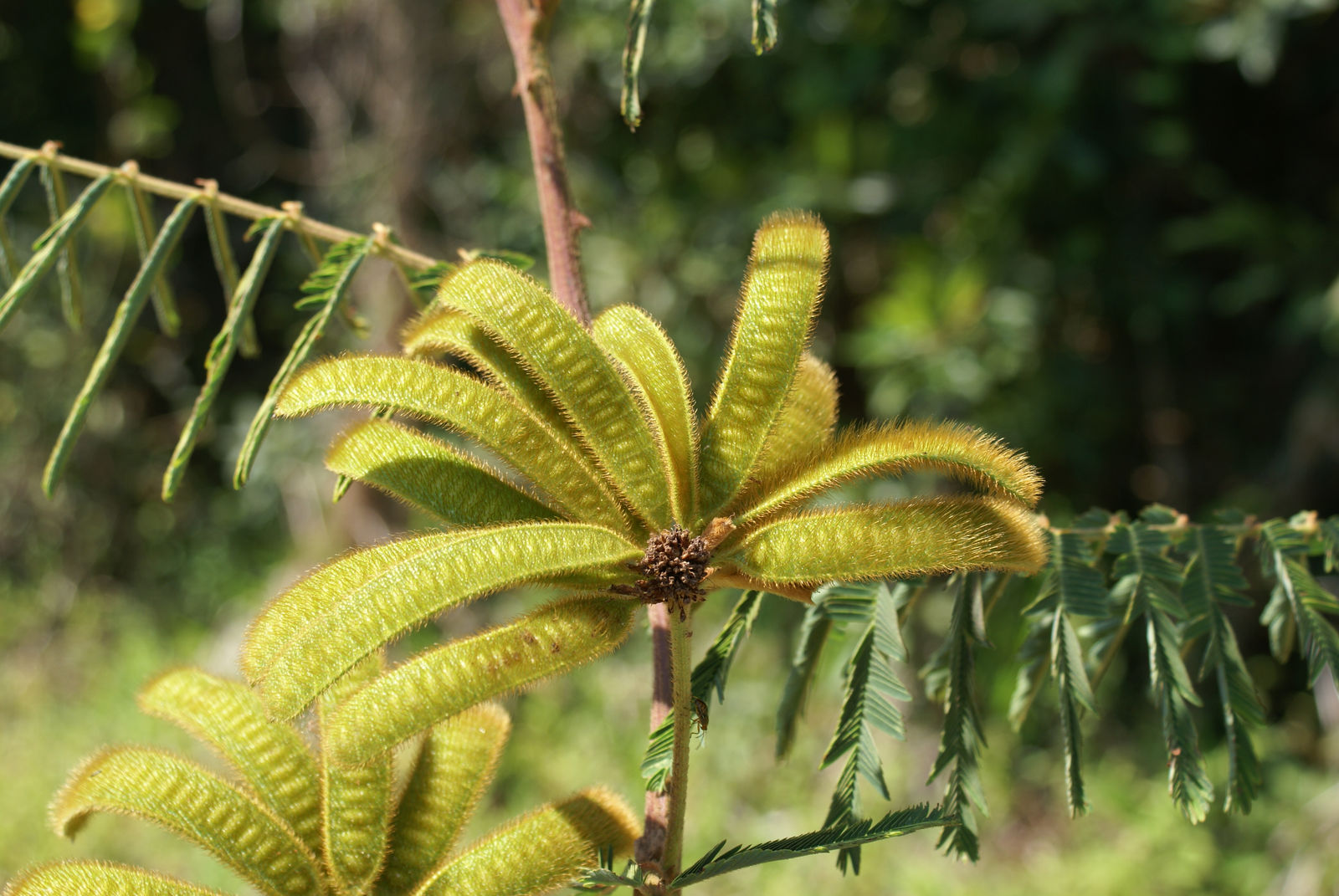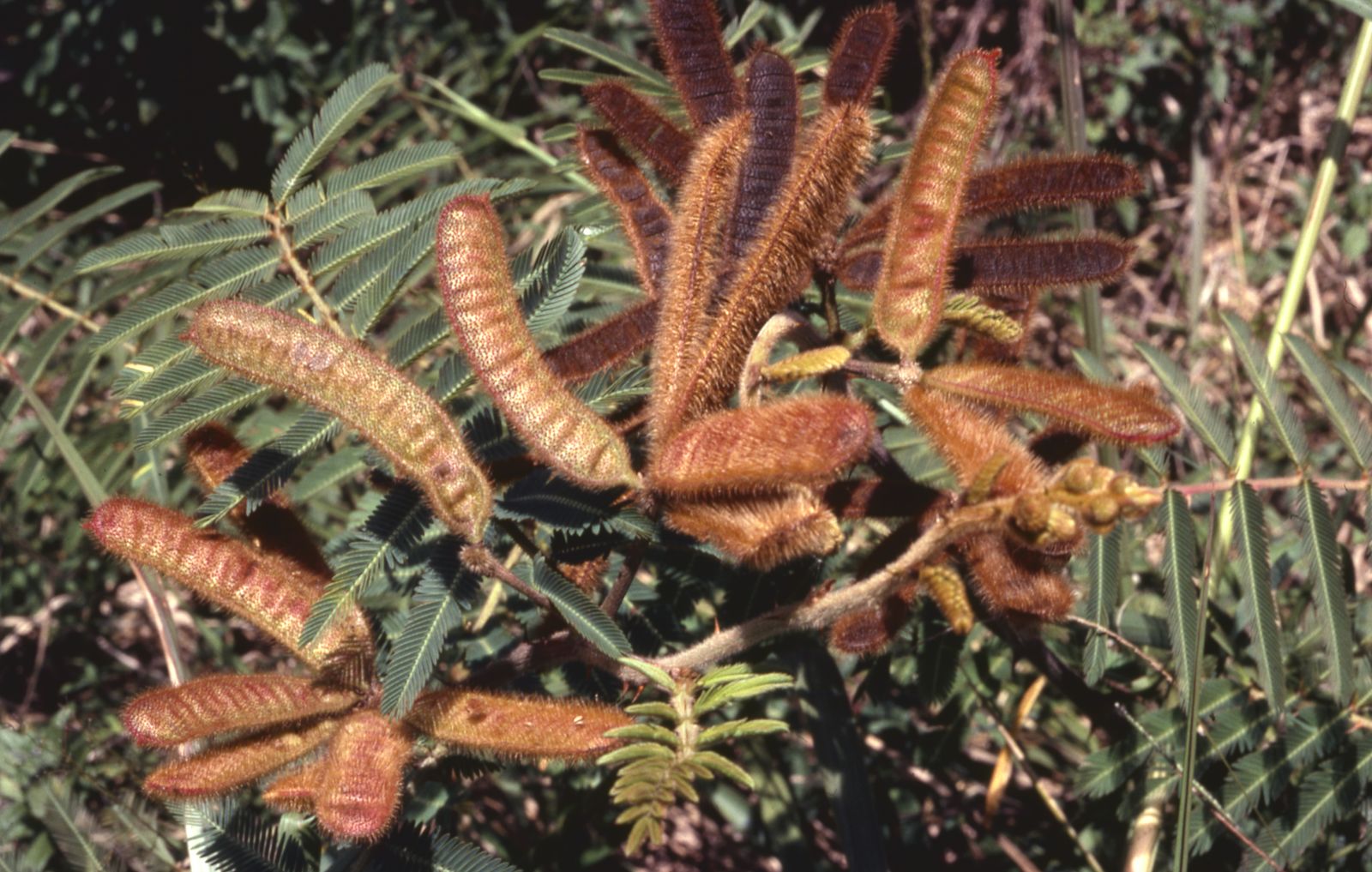Giant sensitive plant
mimosa pigra
Also known as: ["Giant mimosa","Giant sensitive plant","Sleeping plant"]
Overview
A large, invasive leguminous shrub native to the Americas, known for its sensitive leaves that fold when touched and its sharp thorns.
Benefits & Perks
["fast growing","wildlife attractant (bees, butterflies, birds)","drought tolerant"]
Botanical Classification
| Phylum: | Magnoliophyta |
| Class: | Magnoliopsida |
| Order: | Fabales |
| Family: | Fabaceae |
| Genus: | Mimosa |
| Botanical Name: | Mimosa pigra |
Plant Characteristics
Basic Information
- Category: Shrubs
- Suitable Location: wetland edges, riverbanks, or disturbed areas
- Suitable For:
- Is Weed: No
- Allergenicity: low
Environmental Needs
- Climate: {"temperatureRange":"15–35°C"}
- Hardiness: {"zones":"9–11"}
- Misting: rarely required, only if ambient humidity is very low
- Drainage: Fast-draining to prevent root rot.
- Soil Type: Well-draining, sandy loam with organic matter; avoid heavy clay.
Maintenance Level
- Maintenance Level: very low
- Toughness Level: very high
- Pruning Frequency: Annually or as needed to control size and shape.
- Pruning Intensity: Moderate; remove up to one-third of growth if overgrown.
Care Details
Ideal Sunlight Coverage:
Full sun (6–8 hours/day); tolerates partial shade but may become leggy.
Sunlight Tolerance Tips:
Acclimate gradually to intense sunlight; protect from harsh afternoon sun in hot climates; ensure adequate light indoors with supplemental grow lights if needed.
Care Requirements
Care Difficulty
moderatemoderate
Sunlight
full sun to partial shade
Rotate plant for even light exposure; avoid direct sun on leaves during peak hours; adjust for seasonal light changes.
Watering
every 7–10 days during active growth, less frequently in dormant periods
Water thoroughly but infrequently; ensure soil dries between waterings; avoid overwatering.
Soil
well-drained, sandy or loamy soil
pH: Slightly acidic to neutral (pH 6.0–7.0).
Use a mix of sand and compost; ensure pots have drainage holes; avoid waterlogging.
Temperature
Warm temperatures (65–85°F/18–29°C); sensitive to frost; thrives in tropical to subtropical climates.
Protect from frost; avoid sudden temperature swings; maintain consistent warmth.
Fertilizing
every 4–6 weeks during growing season with balanced liquid fertilizer
Fertilize during active growth; dilute to prevent burn; stop in dormant periods.
Propagation
Methods
Stem cuttings or seeds; stem cuttings are faster and more reliable.
Step-by-Step Propagation Guide
- Take a 4–6 inch cutting.
- Remove lower leaves.
- Apply rooting hormone.
- Plant in medium.
- Keep moist and warm.
Best Time: Spring or early summer when the plant is actively growing.
Environment
Warm, humid environment with indirect light; maintain consistent moisture.
Medium
Well-draining mix of perlite and peat moss or cactus mix.
Hormone
Rooting hormone recommended for faster and more reliable rooting.
Timeline
Roots may appear in 2–4 weeks; establish in new pot within 2–3 months.
Tools Needed
Pruning shears, rooting hormone, small pots, well-draining medium.
Quick Tips
Use healthy, non-flowering stems; keep cuttings out of direct sun; maintain humidity with a plastic bag if needed.
Pruning & Repotting
Pruning Guide
Method
Selective pruning of stems to shape the plant; cut just above a leaf node or bud.
Pruning Plan
Prune to maintain shape, encourage bushiness, and remove dead or overgrown stems.
Tools
Pruning shears, gloves, disinfectant for tools.
Checklist
Disinfect tools; prune dead or damaged stems; shape the plant; clean up debris.
Repotting Guide
Best Season
Spring, before the active growing season begins.
Pot Size
Increase pot size by 2–3 inches in diameter; ensure good drainage.
Method
Remove plant gently; trim roots if necessary; place in a new pot with fresh soil; water lightly.
Suggestions
Repot every 2–3 years or when roots fill the pot; beneficial for growth and health.
Checklist
Check root bound status; prepare new pot with drainage; trim roots if needed; use fresh soil.
Advanced Care Tips
Watering Mastery
Watering Checklist
Check soil moisture; water deeply; ensure drainage; adjust for season.
How to Apply Water Properly
Water at the base of the plant, ensuring moisture reaches the root zone; allow excess water to drain away; water in the morning to reduce evaporation.
Watering Schedule Tips
Water deeply once the top inch of soil is dry; reduce frequency in winter to prevent root rot.
Soil Improvement
Add perlite or sand for drainage; incorporate compost for fertility; ensure aeration with organic matter.
Temperature Stress Management
Signs of Temperature Issues
Chlorosis or leaf drop in cold; wilting or stunted growth in excessive heat.
Cold Stress
Growth slows or halts; leaves may yellow or drop; risk of frost damage or death in prolonged cold.
Solution: Move to a warmer location; provide frost protection; reduce watering in cold periods.
Hot Stress
Wilting, leaf scorch, or reduced flowering; may drop leaves to conserve water.
Solution: Provide shade during peak heat; increase humidity; water deeply but avoid waterlogging.
Fertilizing Guide
Fertilizing Checklist
Check growth phase; use diluted fertilizer; apply to moist soil; avoid foliage contact.
Fertilizing Method
Use balanced liquid fertilizer diluted to half strength every 4–6 weeks during growing season; avoid fertilizing in winter.
Common Problems & Solutions
Toxicity Warning
Cats
ToxicCats are susceptible to toxicity from Mimosa pigra, particularly from the seeds and roots, which can cause severe gastrointestinal and neurological symptoms.
⚠️ Symptoms:
🌿 Toxic Parts:
⚡ Toxic If:
if eaten
Dogs
ToxicIngestion of Mimosa pigra by dogs can lead to severe gastrointestinal upset and potential neurological symptoms due to the toxic compounds present in the seeds and roots.
⚠️ Symptoms:
🌿 Toxic Parts:
⚡ Toxic If:
if eaten
Humans
ToxicMimosa pigra contains toxic compounds that can cause gastrointestinal distress and neurological effects upon ingestion. The seeds and roots are particularly potent, containing substances that interfere with normal physiological processes.
⚠️ Symptoms:
🌿 Toxic Parts:
⚡ Toxic If:
if eaten
Frequently Asked Questions
Q: Is Mimosa pigra suitable for home gardens?
A: No, it is highly invasive and should not be planted in home gardens due to its aggressive spread.
Q: Does Mimosa pigra have any medicinal uses?
A: There is limited documented evidence of its medicinal use, though traditional practices may exist.
Q: How does Mimosa pigra respond to touch?
A: Its leaves rapidly fold and droop when touched, a defense mechanism against herbivores.
Quick Reference
| Family: | Fabaceae |
| Care: | moderate |
| Light: | full sun to partial shade |
| Water: | every 7–10 days during activ |
Get Expert Care Tips
Download the Plantious app for personalized care reminders and plant identification!
Google Play App Store








